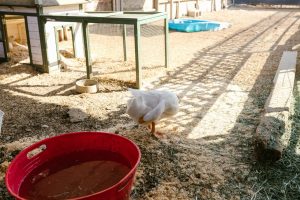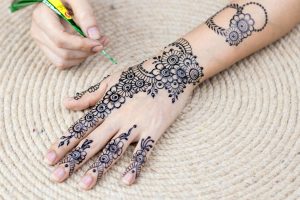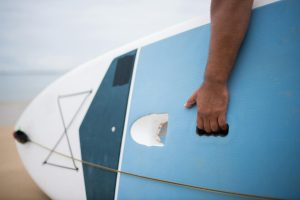Beyond the Stream: A Creator’s Blueprint for a Profitable First Merch Drop
Your Art is Ready. Your Audience is Waiting. It’s Time to Go Physical.
The word ‘merch’ can feel complicated, even a little… corporate. For artists, musicians, and filmmakers, the idea of selling T-shirts can feel like a step away from the art. It conjures images of dealing with inventory boxes, losing money on unsold sizes, and becoming a salesperson instead of a creator. As of July 3, 2025, let’s permanently delete that image from your mind. Merch isn’t a tacky souvenir. It’s a physical artifact of the community you’re building. It’s a uniform for your fans, a way for them to raise their hand and say, “I’m part of this world.” And most importantly, it’s the first major step toward building a sustainable income that frees you to create more art. This is your blueprint for launching your first profitable merch drop, with zero inventory and zero financial risk.
Why Merch is More Than Just a T-Shirt
Before we dive into the nuts and bolts, we need to correct a fundamental misunderstanding many creators have. You’re not just selling a product; you are monetizing a connection. Every piece of merchandise you sell accomplishes three critical business goals simultaneously:
- Revenue Diversification: Relying solely on streaming royalties, ad-share, or one-off gigs is a recipe for financial anxiety. A successful merch line creates a predictable, high-margin revenue stream that you control completely.
- Physical Marketing: Every fan who wears your hoodie or puts your sticker on their laptop is a walking billboard for your art. They are introducing you to their friends, family, and people at the coffee shop in a way no digital ad ever could. It’s marketing that your fans pay you for.
- Community Building: When someone buys your merch, they are graduating from a passive follower to an active supporter. They are investing in your story. Seeing someone else in the wild wearing the same artist’s shirt creates an instant bond. You’re not just selling apparel; you are creating a tangible symbol of belonging.
Strategist’s Debrief (The Zero-Risk Revolution): Ten years ago, launching merch meant a massive financial gamble. You’d have to guess what sizes people wanted, pay thousands of dollars for a minimum order of 100 shirts, and then deal with the boxes cluttering your apartment. Today, that is obsolete thanks to Print-on-Demand (POD) services. With POD, products are only created *after* a customer places an order. There is no inventory, no guessing game, and absolutely zero upfront cost. The company prints your design on the product and ships it directly to your customer. You just create the design and collect the profit. It has single-handedly leveled the playing field for independent creators.
Part 1: The Art of the Design (That Actually Sells)
Your first merch design is not the time to be overly complex. The most successful creator merch often leans into simplicity and community-insider status. Before you even open a design program, you need to validate your ideas. Your audience will tell you what they want to buy if you just ask.
Use Instagram Stories polls to ask simple questions:
- “For our first merch: T-Shirt or Hoodie?”
- “Which colorway do you like more? (Show mockups)”
- “Working on a design… which lyric/quote resonates most? A) ‘…’ B) ‘…'”
This process does two things: it guarantees you’re making something people actually want, and it makes your audience feel involved in the creative process, which builds massive anticipation for the launch. Here are three proven design concepts for a first drop:
- The Minimalist Logo: A simple, clean version of your artist name, channel logo, or a symbol associated with your work. Think less about a giant, loud tour shirt and more about something tasteful someone would wear on a regular day.
- The Community Inside Joke: A specific lyric from a beloved song, a catchphrase from your videos, or a simple graphic that only your true fans will understand. This creates a powerful sense of identity.
- The Art-Centric Design: If you’re a visual artist, this is your time to shine. Use one of your signature pieces. For musicians or filmmakers, this could be an artistic rendering of your album art or a still from a film.
Launchpad: Your Zero-Risk Merch Machine in 5 Steps
This is the technical core. Follow these steps exactly and you will have a fully functional, professional merchandise store ready to take orders in an afternoon.
- Choose Your POD Partner: Sign up for a free account at Printful. They have a massive catalog of high-quality products (shirts, hats, mugs, posters), great print quality, and seamless integrations. They are the industry standard for a reason.
- Design Your First Product: Use a free tool like Canva to create your design. A simple text-based design using a cool font is perfect for a start. Export your design as a PNG file with a transparent background. In Printful, go to the ‘Product Templates’ section, choose a T-shirt (the Bella + Canvas 3001 is a fan-favorite for its softness), and upload your design.
- Build Your Storefront: While Shopify is the king, it has a monthly fee. For your first drop, start free. Sign up for the free plan at Big Cartel. It’s built for artists and allows you to list up to 5 products for free. Choose a simple theme and upload the product mockups that Printful automatically generates for you.
- Connect and Price Your Product: In your Big Cartel dashboard, find the option to add an integration and connect your Printful account. This is the magic step. Now, when someone buys from your Big Cartel store, the order will be sent automatically to Printful. For pricing, use this formula: Printful Base Cost + (Your Profit Margin * Base Cost) = Your Price. A good starting profit margin is 40-50%. (e.g., if a shirt costs $15 to make, price it at $25-$28).
- Order a Sample: This is the only step that costs money, and it is non-negotiable. Order one of your own products. It will allow you to check the print quality, the feel of the garment, and, most importantly, take your own authentic photos for the launch. Phone photos of you actually wearing the product are 1000x more effective than a sterile mockup.
Part 2: The Art of the ‘Drop’ – Engineering Hype & Scarcity
Your store is ready. Now comes the marketing. The biggest mistake creators make is quietly adding a “Merch” link to their bio. Don’t just release your merch; you must launch it. The most effective way to do this is with a limited-time ‘drop’ model. This means the merch is only available for purchase for a short window, like 48 or 72 hours.
Strategist’s Debrief (The Psychology of the Drop): Why does this work? It leverages powerful psychological triggers. Scarcity (it won’t be available forever) and Urgency (the clock is ticking) compel people to make a decision. An ‘always on’ store invites procrastination. A ‘drop’ creates an event. It turns a simple product release into a cultural moment for your community. It’s the difference between saying “Here’s a shirt” and “The shirt is coming. Get ready.”
Your launch campaign should be a 7-day-minimum buildup:
- 7 Days Out: The Official Announcement. Post a high-quality photo or video of you in the merch. Announce the exact date and time the store will go live. Tell your fans it’s a limited 72-hour drop.
- 5 Days Out: Behind the Scenes. Share the story of the design. Why did you choose that lyric? What does the graphic represent? Make it personal.
- 3 Days Out: Reinforce the Scarcity. Post to your stories using the countdown sticker. Remind everyone that this is their only chance to get this specific design.
- 1 Day Out: Give Your Superfans Priority. Send an email to your email list announcing they will get a password for 1-hour early access before anyone else. This is an incredibly powerful way to reward your most dedicated supporters and drive email sign-ups.
- Launch Day: Go live! Post across all platforms (TikTok, Instagram, X, YouTube Community Tab). Update the link in all of your bios to go directly to the store. Be online and engage with comments and questions. Share user-generated content as people start making purchases.
Case Study: The Lyric That Funded an EP
Indie-folk artist ‘Clara Mae’ had a devoted following of around 10,000 on Instagram and a mailing list of 800 people. She wanted to fund her next EP without going into debt. One of her songs, “Northern Pines,” had a fan-favorite lyric: “Lost in the echoes, found in the green.”
She used Instagram polls to let her fans choose between a forest green and a charcoal grey hoodie. Green won by a landslide. She then had a friend create a simple, elegant text design of the lyric in Canva. Using Printful and Big Cartel, she set up her store with zero upfront cost. She ordered one sample hoodie and spent an afternoon taking photos in a local park.
She executed a one-week launch plan, culminating in a 48-hour drop. The email list got access first. The result? She sold 112 hoodies at a $20 profit margin each. She earned $2,240 in two days, more than enough to cover the studio time for her EP. The lesson: she monetized a pre-existing emotional connection to a lyric and used a simple, free setup to turn it into sustainable project funding. The merch wasn’t a distraction from the music; it was the key that unlocked it.
Your Business Toolkit: Merch Drop FAQs
“Printful vs. Printify: Which is better for a beginner?”
Both are excellent. Printful is generally considered more beginner-friendly. They manufacture many of their own products, which leads to consistent quality and faster shipping. Their user interface is very clean. Printify is a network that connects you to different print providers. This can sometimes result in lower prices, but quality and shipping times can vary more between vendors. For your first drop, start with Printful to guarantee a smooth experience.
“I’m not a designer and can’t afford one. What are my options?”
You have great, low-cost options. 1) Text is your best friend: A powerful lyric or community catchphrase in a compelling font (use free fonts from Google Fonts) is often more effective than a complex illustration. Canva has thousands of templates. 2) Fiverr: You can find talented designers on Fiverr who will create a simple, professional merch design for as little as $20-$30. Provide them with clear examples of what you like. 3) Use Your Signature: Scan a high-quality version of your signature and put it on a shirt. It’s personal, unique, and costs nothing.
“How much should I charge? I don’t want to rip my fans off.”
This is a common fear. Don’t underprice your work. Your fans want to support you. A standard T-shirt (like the Bella + Canvas 3001) might cost you about $13-$16 on Printful including printing. A fair retail price is between $25 and $30. A hoodie might cost $25-$30 to produce; a fair retail price is $45-$55. Remember, this price covers the product cost, platform fees, and, most importantly, a profit margin that actually funds your creative career. Don’t work for free.
Your 30-Day Merch Launch Calendar
Stop procrastinating. Here is your actionable schedule. Set a date and get it done.
- Week 1: Strategy & Validation (Days 1-7)
- Goal: Finalize your design concept and product choice.
- Actions: Run polls on Instagram about product type (shirt/hoodie) and design ideas (lyric/logo). Browse Printful’s catalog. Create 2-3 design mockups in Canva. Run a final poll to choose the winning design.
- Week 2: Technical Setup & Quality Control (Days 8-14)
- Goal: Build your store and order a sample.
- Actions: Create your Printful and Big Cartel accounts. Create the product template in Printful and connect it to your store. Set your price. Order your sample by Day 10 at the latest to ensure it arrives in time.
- Week 3: The Hype Cycle (Days 15-21)
- Goal: Build massive anticipation for launch day.
- Actions: Once your sample arrives, do a photoshoot. Announce your official launch date & time. Post a photo every other day. Share the story behind the design. Use Instagram’s countdown sticker.
- Week 4: The Launch & Aftermath (Days 22-30)
- Goal: Execute a successful, profitable drop.
- Actions: The day before launch, send the ‘early access’ email to your list. On launch day, post everywhere and update your bio links. Spend the next 48-72 hours engaging with your community. After the drop ends, send a massive ‘Thank You’ email and post. Encourage fans to share photos when their merch arrives to create user-generated content for the future. Analyze your sales data in Printful to see what worked. You’ve done it.















Post Comment
You must be logged in to post a comment.